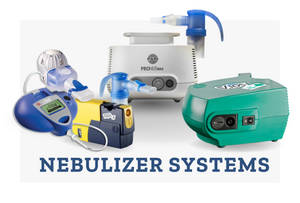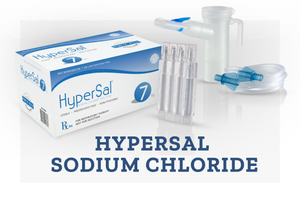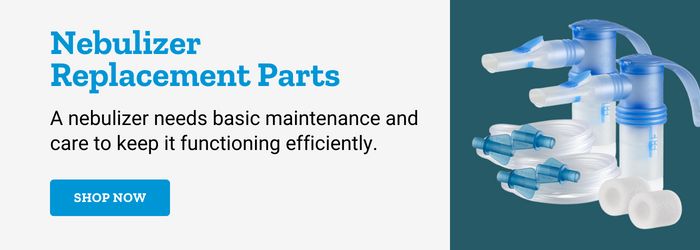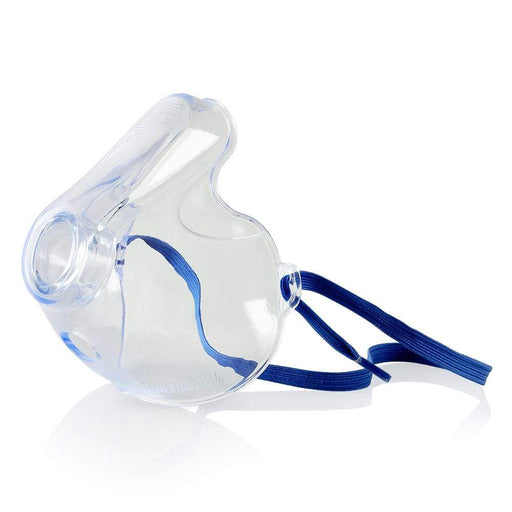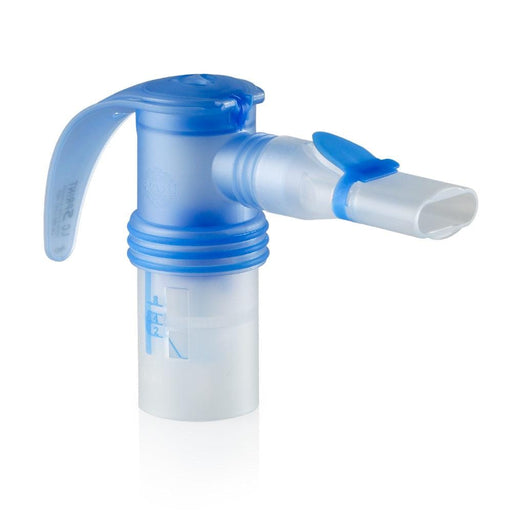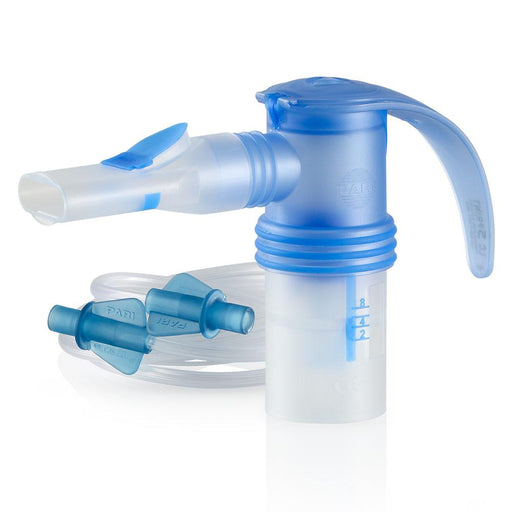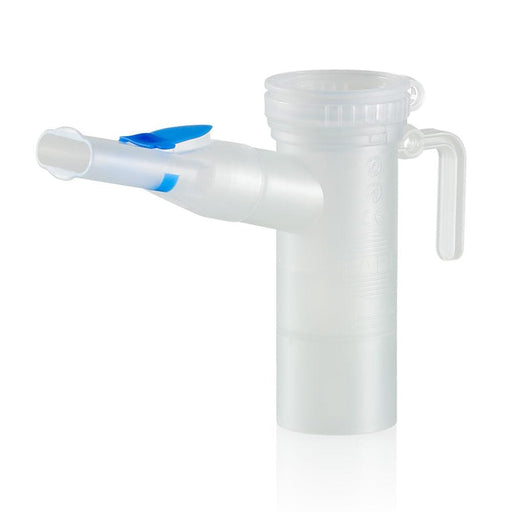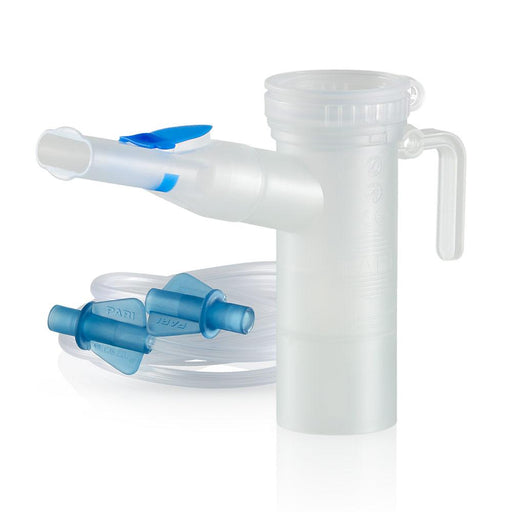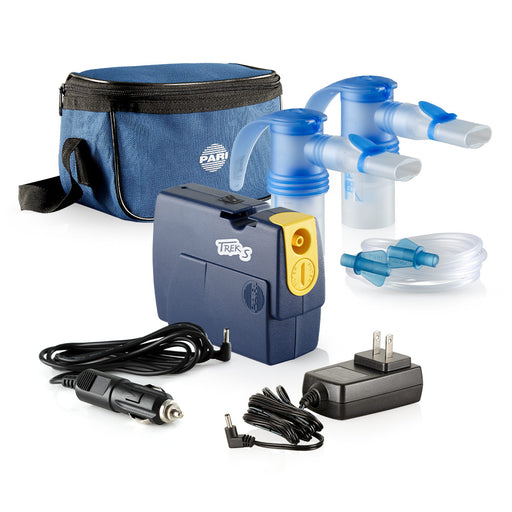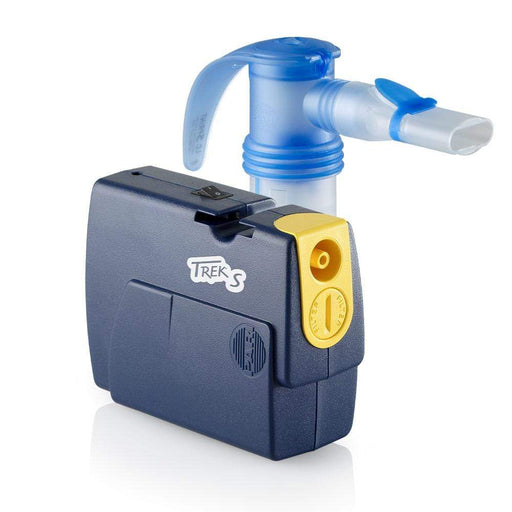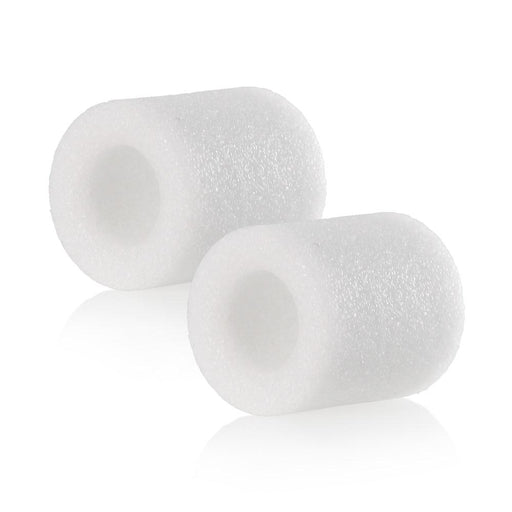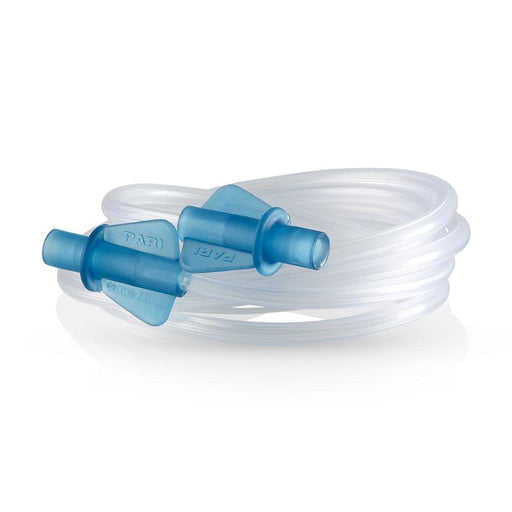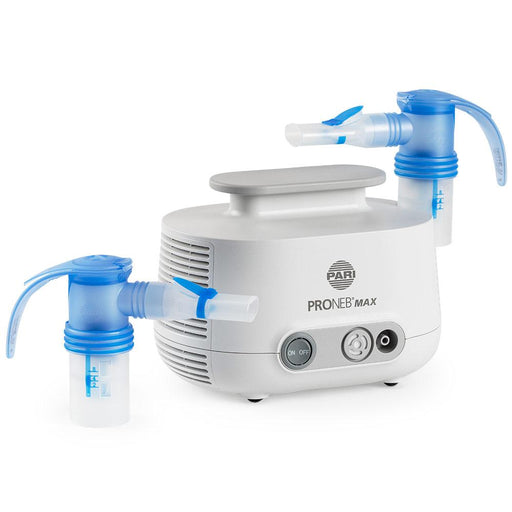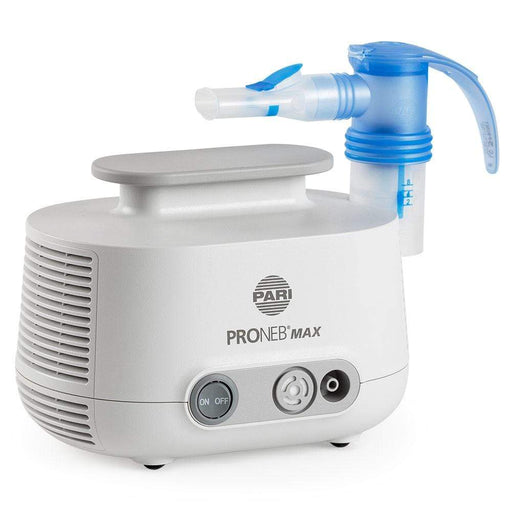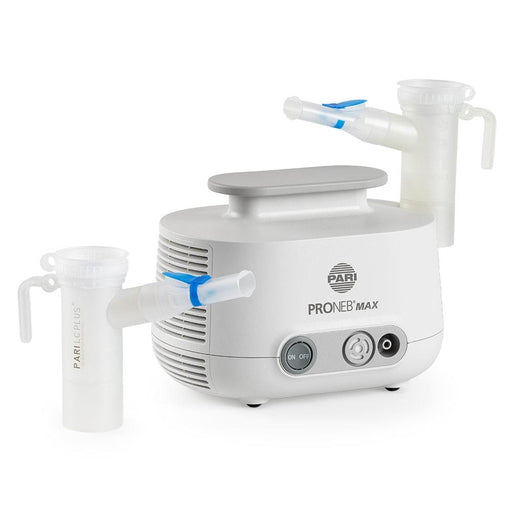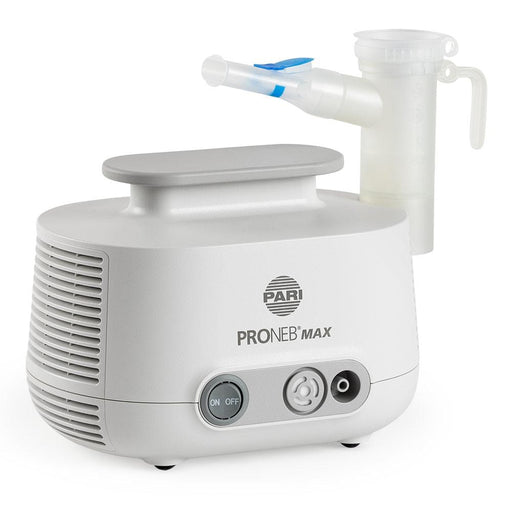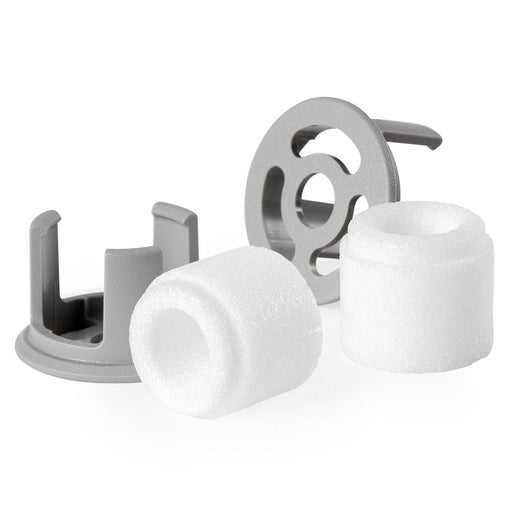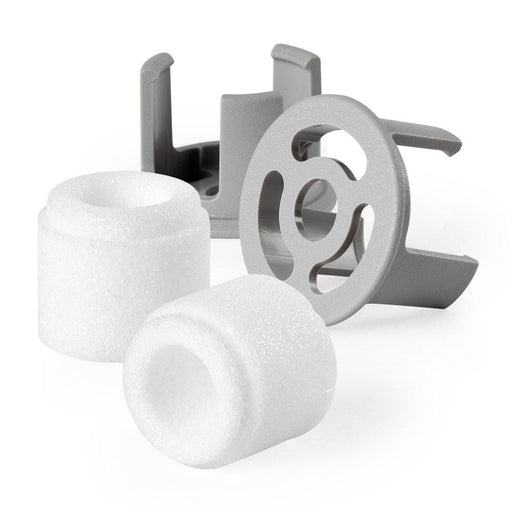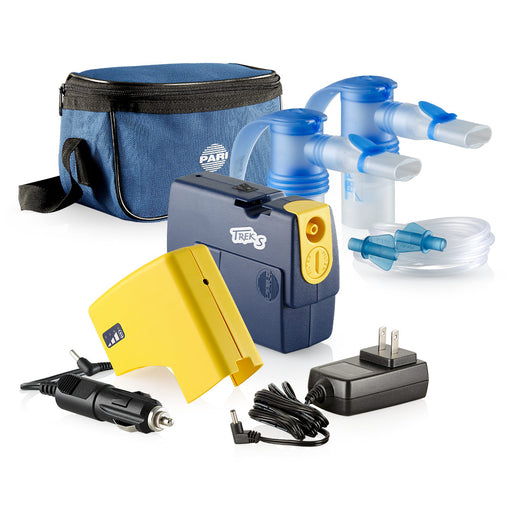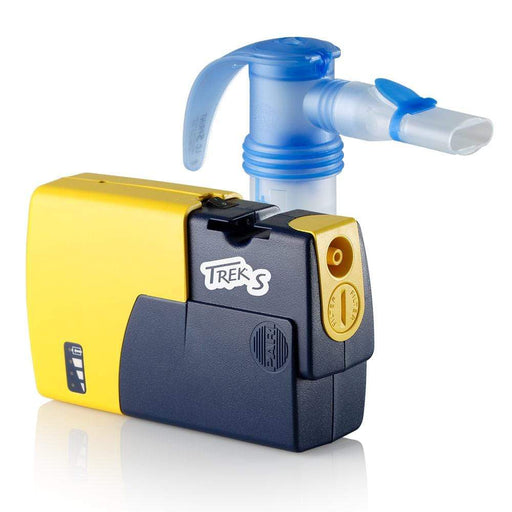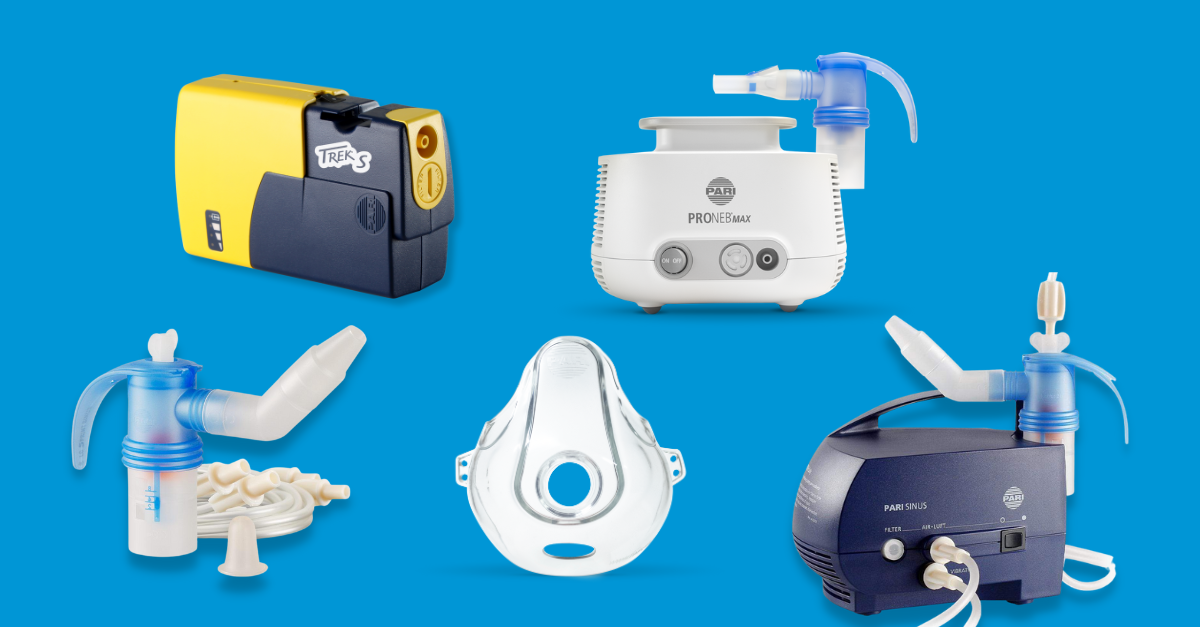
How to Clean and Maintain Your Nebulizer
Conducting the proper Nebulizer cleaning and sanitizing procedures is essential to keeping a nebulizer functioning effectively. Taking care of your nebulizer is a crucial step to making your equipment last longer, preventing it from clogging, and even minimizing your risk of infection.
A nebulizer administers inhaled medication in the form of a mist. Many patients use nebulizers to treat respiratory conditions such as asthma, chronic obstructive pulmonary disease (COPD), cystic fibrosis, and other lung-related health issues.
Nebulizers have many parts like medicine cups that hold the liquid medication, tubing, a mouthpiece or mask, and a compressor system. Dust, debris, and dried medication can clog these systems and if not cleaned and disinfected properly, promote bacterial growth. However, regular cleaning and care can prevent these problems from occurring.
Fortunately, maintaining your nebulizer equipment is fast and easy. You can perform every day and routine maintenance with a few inexpensive household items you probably already own. Manufacturers also provide instructions on how to clean and maintain your equipment and should be followed. Here is a general guide to cleaning and maintaining your nebulizer for optimal performance.
How to Clean a Nebulizer
Cleaning your nebulizer correctly helps to keep the device working well for optimal drug delivery. Here are a few steps to help you properly clean your nebulizer systems.
Designate an Area for Cleaning and Storage
Choose a specific area to both clean your nebulizer and store its supplies. This location should be clean, dry, and free from dust or smoke. Good lighting also helps you to better see dirt or debris in or on your nebulizer, making it easier to clean.
Your storage and cleaning area should be near a water supply and contain fresh, lint-free towels (such as a paper towel) to air dry the equipment. Always use clean water and replace your towels regularly.
Know When to Clean Nebulizer Parts
Proper nebulizer cleaning is essential for getting the most out of your respiratory treatment. Some parts of your nebulizer need to be cleaned after every use, while others require routine maintenance every few months. Here are a few guidelines to follow:
- Nebulizer Cup. Rinse with warm water after every use to remove any leftover medication. After rinsing, shake the nebulizer cup gently to remove all excess fluid. Place the cup in a clean, dry location to let it air dry.
- Washing Your Nebulizer Cup and Mouthpiece or Mask. Use gentle dish soap to wash your mouthpiece or mask each day to remove any debris or contaminants. Do not wash or rinse the tubing or the nebulizer compressor. Reassemble the system and turn on the compressor – the airflow will help dry the components completely.
- Disinfecting Your Nebulizer Cup and Mouthpiece or Mask. Disinfect your nebulizer cup and mouthpiece or mask regularly, according to the manufacturer’s instructions. Use disinfecting solutions recommended by the manufacturer and follow the specific instructions. Do not use harsh chemicals, as there is a chance you may inhale dangerous residue with the next treatment. Soak these pieces in the solution for 20 minutes. Then, rinse under a steady stream of warm water. Shake off excess water and allow the equipment to air dry. Reassemble the system and turn on the compressor to help dry the nebulizer.
Maintaining Your Nebulizer Equipment (Beyond Routine Cleanings)
Examine the Equipment for Damaged or Worn Pieces
Maintaining your nebulizer accessories is important. Take a careful look at the nebulizer cup, mouthpiece, mask, tubing, filters, and compressor to identify any damage or signs of wear. Damaged or worn equipment may affect the benefits of treatment. Replace any old equipment or accessories as needed or keep a backup supply.
Maintain Your Compressor Systems
Nebulizer compressor systems and machine parts need little maintenance aside from general cleaning, proper use, and storage. Wipe down the compressor as directed by the manufacturer. Unplug the nebulizer unit when it is not in use. Store the compressor, parts, and accessories away from any liquid. Keep the nebulizer and its components away from children.
Swap Out Replacement Parts as Directed or as Needed
Nebulizer replacement parts are built to be sturdy and durable, but they are not meant to last forever, no matter how well you clean and maintain them. Reusable nebulizer cups are good for about six months, even with cleaning after every use.
Replace your compressor filters as needed, recommended, or at least once every three to six months, depending on how often you use your nebulizer system. A clean compressor filter is important, to prevent any large dust particles from entering the compressor motor. A clean filter also helps reduce the workload on the machine, which gives the compressor a longer lifespan. Replace your compressor filters whenever they look dirty, even if it is before a scheduled or recommended replacement.
Always use filters specifically made for your compressor. For optimal convenience and to ensure you do not run out, keep at least one filter replacement on hand. Check your nebulizer manufacturer instructions for specific information on filter replacement.
Maintaining Your Compressor Battery for Portable Systems
A compressor battery delivers the power the system needs to run properly. While your compressor battery pack is virtually maintenance-free, it still requires occasional care. If you do not use the battery regularly, you should recharge it every six months. Allowing the battery to go uncharged for long periods decreases its overall lifespan. Always charge your battery in a cool, dry place for best results.
Before each use, look at the indicator lights to determine the status of your battery. The indicator lights should turn on to show that the battery is fully charged and working correctly. Indicator lights that do not turn on mean that the battery is not working correctly and should not be used.
Choose Nebology for Better Respiratory Care
The better you care for your nebulizer equipment, the more benefits you can receive from your treatments. For more information about maintaining your nebulizer, consult with your medical equipment provider.
To get quality respiratory care and treatment from a trusted name, choose the PARI systems from Nebology. We provide clinically-proven nebulizers and accessories that are built to last. If you are already an owner of a PARI nebulizer system, order your replacement parts from Nebology today. For questions about our products, contact our team.
SHOP CLINICALLY PROVEN NEBULIZER SYSTEMS & SUPPLIES
-
PARI LC Adult Aerosol Mask with Pro-Vent Technology
Original price $5.00 - Original price $5.00Original price$5.00$5.00 - $5.00Current price $5.00In stockOriginal price $5.00 - Original price $5.00Original price$5.00$5.00 - $5.00Current price $5.00 -
PARI LC Sprint Reusable Nebulizer Cup & Tubing
Original price $14.95 - Original price $14.95Original price$14.95$14.95 - $14.95Current price $14.95In stockOriginal price $14.95 - Original price $14.95Original price$14.95$14.95 - $14.95Current price $14.95 -
PARI LC Plus Reusable Nebulizer Cup & Tubing
Original price $14.95 - Original price $14.95Original price$14.95$14.95 - $14.95Current price $14.95In stockOriginal price $14.95 - Original price $14.95Original price$14.95$14.95 - $14.95Current price $14.95 -
PARI Trek S Portable Nebulizer System with LC Sprint
Original price $79.00 - Original price $185.00Original price$79.00 - $185.00$79.00 - $185.00Current price $79.00In stockOriginal price $79.00 - Original price $185.00Original price$79.00 - $185.00$79.00 - $185.00Current price $79.00 -
Filters for PARI Vios, Ultra II, and Trek S System - 2 Per Package
Original price $8.45 - Original price $8.45Original price$8.45$8.45 - $8.45Current price $8.45In stockOriginal price $8.45 - Original price $8.45Original price$8.45$8.45 - $8.45Current price $8.45 -
PARI Wing Tip Tubing
Original price $7.00 - Original price $7.00Original price$7.00$7.00 - $7.00Current price $7.00In stockOriginal price $7.00 - Original price $7.00Original price$7.00$7.00 - $7.00Current price $7.00 -
PARI PRONEB Max Nebulizer System with LC Sprint
Original price $99.00Original price $99.00 - Original price $99.00Original price $99.00Current price $81.99$81.99 - $81.99Current price $81.99In stockOriginal price $99.00Original price $99.00 - Original price $99.00Original price $99.00Current price $81.99$81.99 - $81.99Current price $81.99Sale -
PARI PRONEB Max Nebulizer System with LC Plus
Original price $99.00Original price $99.00 - Original price $99.00Original price $99.00Current price $81.99$81.99 - $81.99Current price $81.99In stockOriginal price $99.00Original price $99.00 - Original price $99.00Original price $99.00Current price $81.99$81.99 - $81.99Current price $81.99Sale -
Filters for PARI PRONEB Max System - 2 Per Package
Original price $9.00 - Original price $9.00Original price$9.00$9.00 - $9.00Current price $9.00In stockOriginal price $9.00 - Original price $9.00Original price$9.00$9.00 - $9.00Current price $9.00 -
PARI Trek S Portable Nebulizer System with LC Sprint & Battery Pack
Original price $185.00 - Original price $185.00Original price$185.00$185.00 - $185.00Current price $185.00In stockOriginal price $185.00 - Original price $185.00Original price$185.00$185.00 - $185.00Current price $185.00

